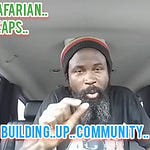In the grand theater of human existence, every society, every community, is woven from threads of shared belief and practice. We often speak of what people follow: the laws, the customs, the doctrines, the trends. But perhaps a more profound understanding lies in what the people teach. For it is in the lessons imparted, consciously or unconsciously, that the true essence of what a group cherishes and perpetuates is revealed.
What, then, do people teach? The answer is as vast and varied as humanity itself, but a few recurring themes emerge, forming the bedrock of our collective journeys.
The Pillars of Being: Morality and Ethics
At the heart of most societal teachings lies a framework for how individuals ought to interact with one another and with the world. This is the realm of morality and ethics. People teach the value of kindness, of honesty, of compassion. They teach the consequences of greed, of deceit, of cruelty. These lessons are often delivered through stories, through proverbs, through the pronouncements of elders and leaders, and most powerfully, through the lived examples of those around us. Whether enshrined in religious texts, philosophical treatises, or the unwritten rules of everyday life, the transmission of ethical principles is a fundamental human endeavor.
The Craft of Living: Skills and Knowledge
Beyond the moral compass, people teach the practicalities of survival and flourishing. From the most basic skills like farming, building, and healing, passed down through generations of apprenticeship, to the complex scientific theories and artistic techniques mastered through formal education, knowledge is continually transmitted. This teaching isn't always formal; it's in the way a parent guides a child, a craftsman shares their expertise, or a scientist explains their discoveries. It's the accumulated wisdom of a people, distilled and passed on to ensure continuity and progress.
The Sacred and the Sublime: Spirituality and Meaning
Many societies teach a connection to something larger than themselves. This can manifest as religious dogma, spiritual practices, or a philosophical exploration of existence and purpose. People teach about the divine, about the afterlife, about the interconnectedness of all things. These teachings often provide comfort in times of hardship, a framework for understanding suffering, and a sense of belonging to a universal narrative. They address the fundamental human need for meaning and transcendence.
The Forge of Identity: Culture and Tradition
What people teach is intrinsically tied to their cultural identity. They teach the songs that tell their history, the dances that celebrate their victories, the rituals that mark their milestones. They teach the foods that nourish their bodies and connect them to their heritage, the languages that carry their thoughts and emotions, and the art that expresses their unique worldview. These cultural teachings are the threads that bind individuals to their community, fostering a sense of shared history, belonging, and pride.
The Scars of Experience: Lessons Learned and Mistakes Remembered
Crucially, what people teach is often shaped by what they have learned through hardship and error. The stories of past failures, of societal upheavals, of injustices suffered, are potent teaching tools. People teach to avoid repeating mistakes. They teach the importance of vigilance, of questioning authority, of standing up for what is right, because they have witnessed the alternative. These cautionary tales, while sometimes painful to revisit, are vital for societal resilience and growth.
The Paradox of Practice:
However, the most fascinating aspect of this dynamic is the inherent paradox. What people teach is not always what they follow. The ideals proclaimed may clash with the realities of behavior. The lessons of compassion may be overshadowed by acts of prejudice. The pursuit of knowledge may be stifled by dogma. This disconnect between teaching and following is a perennial source of societal tension and a fertile ground for introspection and change.
Ultimately, understanding what people teach is to understand their aspirations, their fears, their values, and their vision for the future. It is to look beneath the surface of laws and customs and to see the living, breathing lessons that shape our collective destiny. By examining the tapestry of what is taught, we can begin to unravel the intricate patterns of what it truly means to be human, together. And perhaps, by critically engaging with these teachings, we can consciously choose which threads we wish to strengthen, and which we need to reweave.













Share this post